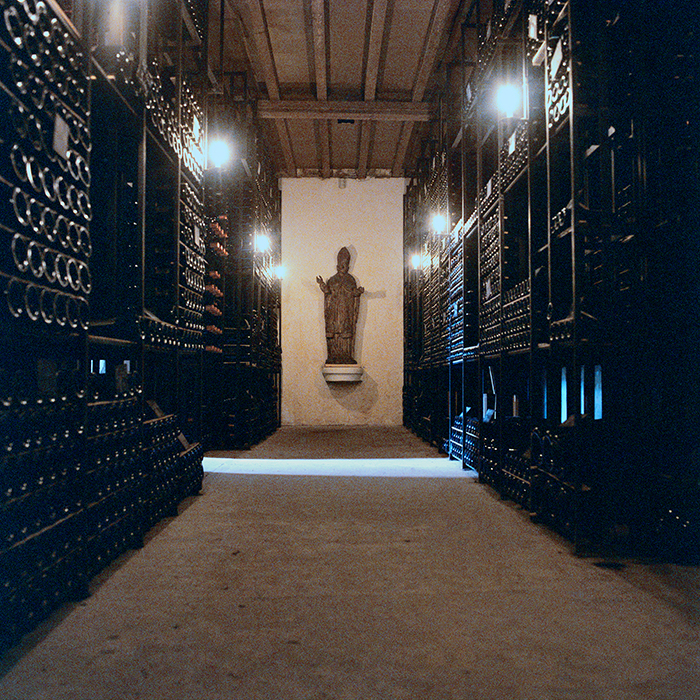What to drink in 2019: Bordeaux
Author: Tom Cave

Ch. Palmer, Bordeaux. Photograph: Jason Lowe
Higher grade 2000s are developing still; it’s proven to be a burlier vintage than many expected, and in fact quality is better than some thought. The 2001 vintage, from top level down, is now ready and offers supremely elegant drinking; a firm favourite for now.
Most 2002s are well into their best and generally it’s not a vintage to keep. They cost little on release and have well rewarded those who bought into this modest-quality vintage, but it’s not one to hang on to: drink up, and enjoy the low VAT you’ll be charged compared to more recent years.
The 2003s don’t seem to have adjusted much since last reviewed. Almost lumpen in some cases, with few exceptions (which tend to be in St Estèphe), these aren’t likely to yield much pleasure by keeping further.
There’s more joy to be found in the 2004s, even if some reveal a lick of green pepper in them due to a lack of full ripeness. Keep going with the ’04s while the more noble, and the wine trade’s favourite vintage of recent times, 2005 develops with assured conviction for those of the right grade. Having said that, don’t be shy about opening and decanting ’05s, as with plenty of air the vintage’s stellar qualities are very appreciable now and they haven’t aggressive tannins. More everyday wines from this vintage are, of course, well into their drinking window.
The 2006s provide solid fare and are worth a look now, though one can expect more to come. The 2007 is well-known and even respected as a lighter year and any remaining should be at the forefront for current consumption – don’t hang on to these. The 2008 vintage remains a little surly at the higher end, though Cru Bourgeois-grade are good to go.
The 2009 vs 2010 debate continues and it’ll be a lengthy one before we have a decisive answer as to which is “best”. The 2009s are the more affable and can be broached now with confidence as they have softer, sunnier tannins and it’s a vintage that never fully closed down; but don’t dither over the more modest wines in your cellar – they offer real pleasure already. The ’10s on the other hand are massive in all areas and (at the level of quality we are considering here) will benefit hugely from more time.
The 2011 vintage has come into itself since last year. While the 2012s have more to them and warrant keeping, the ’11s show a compelling savoury character and make very satisfying drinking now. I’m not certain they’ll improve markedly, it’s one to be getting on with – much as 2013.
Wines from 2014, 2015 and 2016 can slumber quietly on for the future.
Please note that this update is focused on wines built for ageing, namely the Crus Classés. Browse our range of red Bordeaux on bbr.com; and keep an eye out for further updates on Burgundy and Port.



I think that the classed 03s are tremendous. lLangoa B and Canon La Gaf are drinking beautifully. I have tasted some others and these are most enjoyable and some even heady.
Perhaps I am harsh on the 2003s, most I find underwhelming but I’m delighted to hear these two are drinking well and I will look out for an opportunity to taste them.
2003 Ch Beychevelle also drinking really well now. Better than many expected, really. But probably won’t improve much from now on.
Ch. Beychevelle’s fine pedigree carrying it through, though I note your comment on longevity. Thank you.
2004 Pontet Canet still youthful
V much enjoyed 2004 Batailley today – it’s ready and really good, with a slight green note., but not an issue – just adds complexity in my view!
I concur, an agreeable freshness – what Claret’s all about.
Tom, what’s your thought on 1998 First Growths and Cheval Blanc? Have just a few and don’t want to miss!
To chip in – I am starting to breach my 2003s, including the amazing Leoville Barton and Pavie (yes, the ‘dry Port’ Jancis hated). I would concur with Hamid, many are excellent. One tastes the hot year but in a good way as they make for superb winter-warmer drinking, But I certainly agree… no need to hold unto them for much longer.
Thank you. It is worth noting that Ch. Pavie, with its superb terroir, has in recent years moved away from the style Jancis referred to. A welcome change, of course.
I was fortunate to drink, with a very convivial group of friends, a magnum of 1998 Ch. Haut-Brion before Christmas. Decanted two to three hours before dinner, it showed beautifully, with all the levels of class one expects from a mighty First Growth. You can rest easy that there’s plenty still to come. Not a bad assumption that this’ll apply to the other Firsts.
I’m generally with Tom on 2003, although we had a wonderful Montrose and a pretty excellent Cos recently. Is there any reason that St Estephes seem to do better than other right and left bankers in this hot year?
Graham – I’ve always understood that the vines in St Estèphe were less stressed by the heat of ’03 as there is more clay there, which retained more moisture than the rolling gravel heaps to the south.